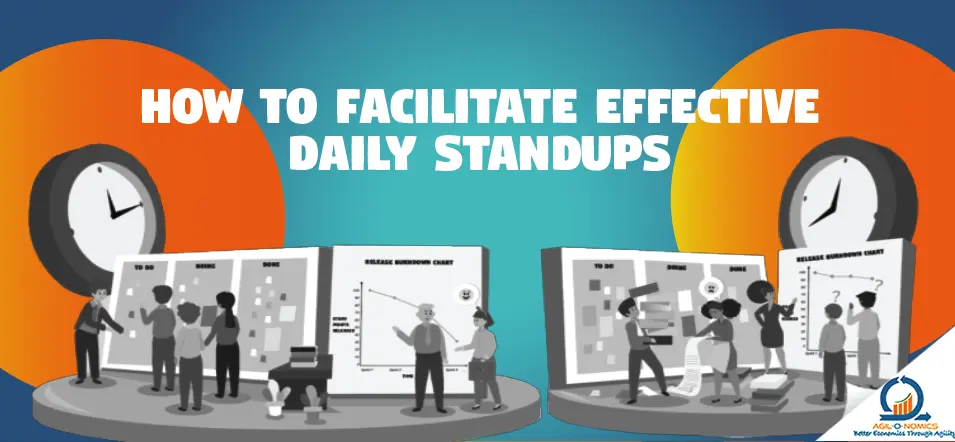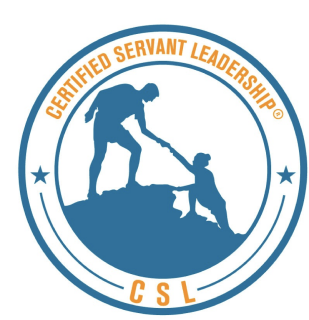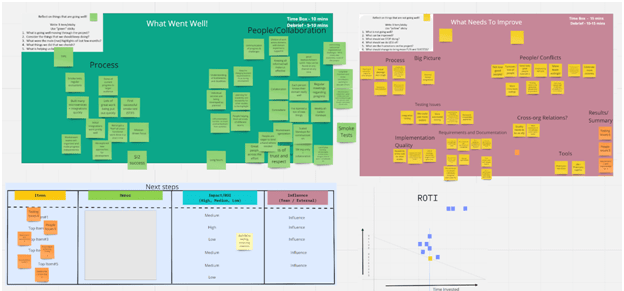
How to facilitate effective daily standups
Are your Daily standups routine, boring and unproductive? Daily stand-ups are a hot topic in the world of scrum and often create a sense of controversy. It’s not uncommon for teams to struggle with the purpose and frequency of these meetings. Some team members may feel uncomfortable with the daily routine, while others may be unclear on how to effectively run the stand-ups. It seems that everyone has their own thoughts and opinions on how these meetings should be conducted. But don’t let the differing viewpoints confuse you! In this article, we’ll dive into all aspects of the daily stand-up and discover simple rules that will help in facilitating effective daily stand-ups more successful. 4 Rules for Agile teams to make their daily standups effective Rule 1: Same time, same place One important rule of daily stand-ups is to have them at the same time and in the same place. Consistency is key! Imagine if you had to attend a daily meeting and its time and location changed randomly. Even if you added it to your calendar, you would probably still miss a few of them. This is because human beings naturally do best with rhythm and it can be seen in all aspects of our lives. Imagine yourself taking a train or ride at the same time and same place daily and that it changed randomly due to a number of reasons. How would you feel about it? Frustrated? Rushed? Missed reaching work on time? Feeling that the organizers and owners of the ride service should stretch out of their comfort zone, make standard rule and expect everyone to abide by those rules, right? Remember, people have busy schedules and multiple commitments in their work and personal lives. What helps us human beings is to establish a rhythm with things that are routine. So, to avoid disruption and ensure maximum participation, it’s best to stick to the same time and place for these meetings. Make sure everyone knows the schedule and adds it to their calendars. This will help everyone stay on track and attend the meetings regularly. Rule2: Start on time ” Starting daily standups on time is crucial for their effectiveness. “ This is because if you allow team members who are running late to dictate the start time, it sets a wrong precedent that can continue in the future. To ensure daily standups start on time, set working agreements and expect team members to adhere to them. Here’s one example from my experience. I was Scrum Master for a team where team members were consistently late for daily standups. To solve this, I brought it up in a retrospective and we agreed on some rules. The team decided that while the standup was scheduled for 10:00 AM, we would actually start at 10:02 AM to allow a two-minute buffer for team members to settle in. If someone arrived after 9:03 or later, they would put $1 in a piggy bank, which we called the food fund. This fund was meant to grow until we had around $20, at which point we would go to Starbucks together. This incentive worked, and the food fund stopped growing as people became more conscious of not losing their $1 on a regular basis. Another example is from Mike Cohn, who used to hand a heavy ball to each team member while providing their plans and updates. The “heavy” ball would create a sense of discomfort and members avoided long conversations while talking In one team I was coaching, the manager and product owner took a more stringent approach. He set a rule where if a team member was one minute late, they would put $1 in the piggy bank, two minutes late would result in $2, and three minutes or more would result in $3. One team member was unfazed by the $1 penalty, but when he started putting $3 in the piggy bank every day, he soon started running out of dollar bills and eventually started coming on time. These are just a few examples of how to start daily standups on time and ensure focused participation. Rule 3: Keep till 15 minutes One of the reasons many team members have a negative view towards daily standup meetings is due to the fact that if not managed effectively, they can easily exceed the allotted time. In my experience, I have seen daily standup meetings go on for over 45 minutes, or even an hour, which can frustrate team members who would rather focus on completing their work. To make sure this doesn’t happen, it’s important to understand the purpose of daily standups. These meetings are not for team members to give updates to their manager or the scrum master, but rather a time for the team to self-organize and plan their work for the next 24 hours. It’s also a time to call out any impediments and ask for help. The three rules mentioned earlier can have a positive impact on daily standups if they are implemented effectively and understood properly. However, if they are not, it can often be a result of the prevalent culture within the team or the entire organization. Format of the daily standup When it comes to the format of effective daily standup meetings, there has been some debate around the use of the three traditional questions. What did I accomplish in the past 24 hours? What will I accomplish in the next 24 hours? What is impeding me from moving forward? While some Agile practitioners believe these questions are too limited and can stifle creativity, I believe that they can be a useful starting point, especially for new teams that are just starting with Scrum. Additionally, even for high-performing teams, these questions can be of value as long as they help the team regularly track its progress through the sprint. What is important? Standups should be purposeful, allowing the team to plan their work for the next 24 hours and to call































